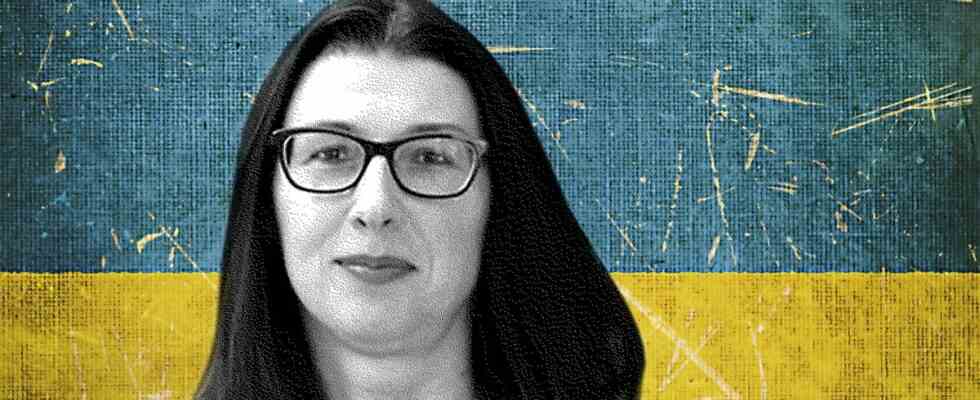“I have the feeling that I’m using the language of the enemy,” says the Russian-speaking writer from Kyiv Andriy Kurkov in an interview. One of the most translated contemporary writers from Ukraine. His Russian as a working language is probably also one of the success factors. There are many translators from Russian, while those from Ukrainian are rather exotic in Western European countries, more precisely, exotic women, because almost all of them are women. After all, Ukraine finally managed to establish the Drahoman Prize for translations from Ukrainian in 2020 and to be the first to honor the German Claudia Dathe in 2021. If one were to change Kurkow’s statement – admittedly somewhat drastically – one could also formulate it with the languages in the same way as was done with regard to the German-language Jewish literature from Bukovina (which does not only apply to Bukovina): He could too feel like writing “in the language of killers”.
Kurkow would not be alone as a writer. Moreover, millions of Russian-speaking Ukrainians might now feel the same way, sharing a common language with their killers. I can’t say whether this is a trauma for some, maybe science could later make it a subject of research. The demand to speak Ukrainian in order to position oneself is very vehement in social media, but also in public discourse. Rightly so. It is important to take a stand, especially in public, by speaking Ukrainian. Nevertheless, the Russian language and Russian-speaking heritage will continue to belong to Ukraine.
Belonging to the cultural scene does not guarantee immunity from imperialism and chauvinism
I very much wish that we would find a differentiated way of dealing with it and realize that “speaking Russian” does not mean “affinity with Russia” by any means, that “Ukrainian Russian” is thought, spoken and perceived differently. Putin is greatly mistaken when he again asserts that the “Russian world” is wherever Russian is spoken. This war showed it with complete dramatic clarity. Only in the parallel reality of Russian neo-imperialism did it not arrive.
Professor Peter Rychlo explains in his interview for the FAZ very convincing, it seems to me, why many great Russian writers, including the dissidents who fled to the West, were chauvinistic about Ukrainian culture. This does not only apply to writers. The assumption that belonging to the cultural scene automatically means immunity from imperialism and chauvinism is far from tenable. Curiously, the interview is illustrated with a photo of the Pushkin monument on the Crimean peninsula. I think the photo of the Pushkin monument in Chernivtsi would look much more authentic, it’s still in the courtyard of a vocational school. I’m curious what will happen to it, after all, some “cultural symbols” were removed from the city after the beginning of the war – such as the Soviet Nikitin tank near the train station and two stars in the so-called star avenue on Theater Square.
The Sternenallee was founded in 2000 – with the idea of honoring important cultural figures from the region. The stars worked into the floor have names, now there are two fewer. Those of singer Ani Lorak and singer Wassyl Herello show gaping holes. Lorak and Herello have been living in Russia for years and delight Russian audiences with their talent, probably for good fees and probably out of conviction. Although you don’t know that exactly with Lorak. She has a good, strong voice, but apparently only the interventions of the plastic surgeons serve to enhance her intelligence. Herello even had the honor of performing at the Crimean annexation concert in February this year. I think the city’s cultural department should be more careful about the awarding of stars in general in the future.
A vast church resembling St. Basil’s Cathedral in Moscow dominates the rural landscape
A few days ago, by chance, contact was reestablished with E. – the community leader in the village of Bila Krynytsia (Eng.: White Well, Romanian: Fântâna Albă). The small town, which only had a few dozen people, is definitely something special. Founded in 1785 by the Old Believers who fled the Russian Empire, it is still the headquarters of the Christian Church of the Old Rite. The Lipovans who were persecuted in their homeland were able to live their faith freely in another, in the Austrian Empire (what an irony of fate: a small part of the non-conforming Russian world flees from the large imperialist Russian world and finds refuge in a non-Russian world refuge).
Anyone who has been to the village knows the spectacular sight: a huge church, resembling St. Basil’s Cathedral in Moscow, towers into the sky, dominating the rural landscape. The community leader, not an Old Believer herself but an energetic woman with a lot of managerial experience who is committed to preserving this unique heritage, says they have also taken in refugees, about 40 people. Where do you live, I want to know. In the empty houses, unfortunately there are so many of them, now they are being revived.
I offer E. from our relief supplies. She’s driving around town on Monday. Food, water and diapers find space in the station wagon, we agree that I will contact her when new aid deliveries arrive. By the way, her only son is at the front, she says and shows me photos on her smartphone. Here he is in full battle gear ready to leave, this is what it looks like in his four meter deep trench. She herself has to do something all the time, she says, otherwise she would be overwhelmed by constant thoughts and worries. And she is committed – for her community, but also for the front.
Read more episodes of this column here.

